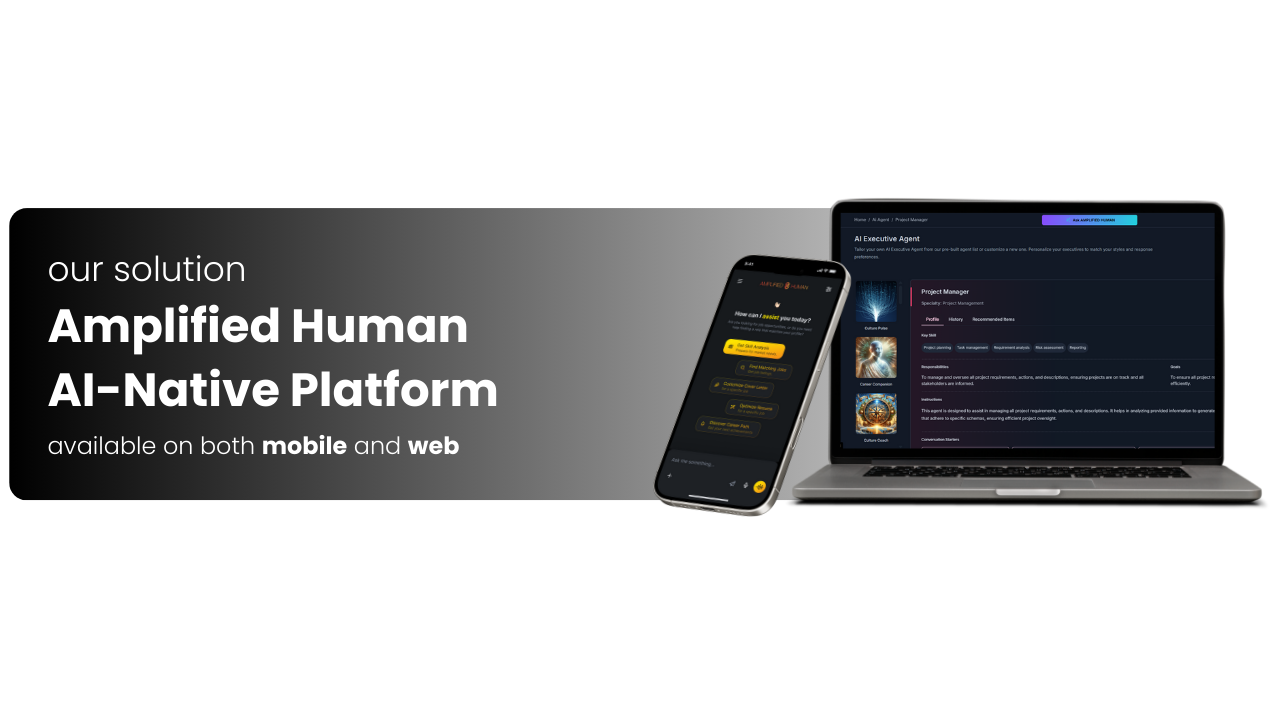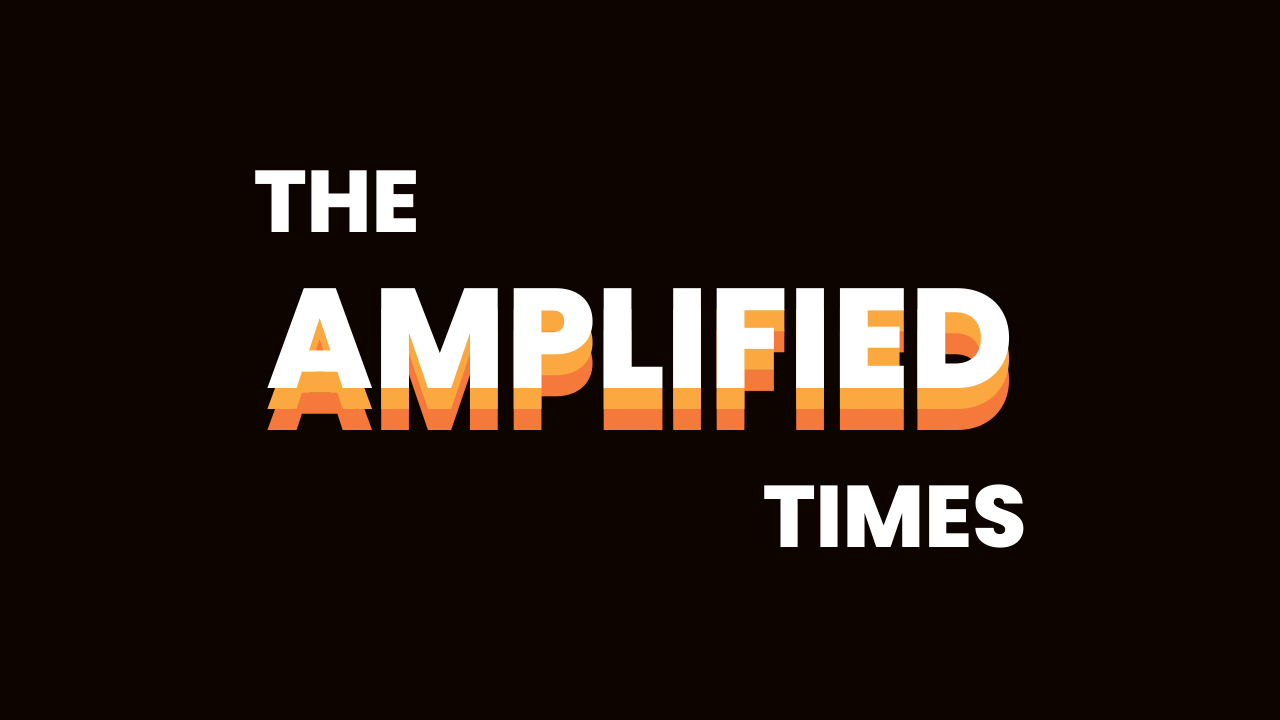Issue 001
Welcome to the weekly newsletter of The Amplified Times (modern edition)
-your weekly brief on AI innovation, work, and what to do next.
We cut the noise on trends, retrenchment, and policy, then turn it into simple moves you can use today.
Follow Amplified Human so you never miss an issue.
Enjoy your read!
– The Amplified Human Team
Agentic AI accelerates while retrenchment headlines spike. Here’s what matters now and how to prepare.
Opening Teams are shifting from chat to agents while workforce restructuring ramps. This week’s brief: the real signals in AI innovation, jobs and exactly what to do next.
LLMs Updates and AI-related news
Agentic AI accelerates while retrenchment headlines spike. Here’s what matters now and how to prepare.
Opening Teams are shifting from chat to agents while workforce restructuring ramps. This week’s brief: the real signals in AI innovation, jobs and exactly what to do next.
LLMs Updates and AI-related news
This week in AI (what actually matters)
Opening Teams are shifting from chat to agents while workforce restructuring ramps. This week’s brief: the real signals in AI innovation, jobs and exactly what to do next.
LLMs Updates and AI-related news

OpenAI GPT-5 launches:
Faster reasoning and deeper integration across Microsoft’s stack. Early criticism shifts from benchmarks to real-world reliability.
The story isn’t benchmark scores—it’s reliability under supervision. GPT-5’s stronger tool use and ecosystem hooks (notably inside Microsoft’s stack) make agent workflows more practical, but only with human-in-the-loop checks and clear data boundaries.
Why it matters: You can now automate multi-step tasks (brief → draft → QA → checklist) with fewer prompts, provided you add guardrails and review steps.
What YOU should try: Pick one repeatable task where quality is measurable (e.g., sales brief, onboarding checklist). Define inputs, model, data boundary, and a reviewer sign-off. Track time saved and errors caught.
What it means: plan for supervised, auditable agent workflows—don’t over-index on demos. Sources: OpenAI, Microsoft, CNBC, Platformer.
Google Gemini 2.5 “Deep Think”:
Extended parallel reasoning; Oracle to sell Gemini via OCI; new privacy-friendly Temporary Chats.
Parallel reasoning at enterprise scale Oracle distributing Gemini via OCI lowers procurement friction, and Temporary Chats help organizations experiment without long-lived data. This opens safer trials in regulated teams.
Why it matters: Easier to run proofs of concept if your infra/security teams already trust Oracle. Parallel reasoning is helpful for comparing alternatives or reconciling conflicting requirements.
What YOU should try: Run a side-by-side pilot: “Explain this policy to a non-expert, generate a 10-point checklist, and produce a 1-slide brief.” Compare quality, speed, and citations across models.
What it means: easier enterprise procurement and safer experimentation.
Sources: Google, Reuters, TestingCatalog.
Anthropic Claude Sonnet 4 (1M-token context): Practical for audits, policy ingestion, long-form code and docs.
Long context means you can bring entire policies, audits, and playbooks into a single session—useful for compliance, onboarding, and code/doc reviews. This is less about chat, more about compressing complex knowledge into usable outputs.
Why it matters: Onboarding and governance assets can be generated, checked, and updated faster, with source citations pointing to sections of the original document.
What YOU should try: Feed one real policy + SOP deck and ask for:
- a role-based checklist
- FAQs,
- a “mistakes to avoid” card. Make sure to validate citations before adoption.
What it means: long-context agents can compress onboarding and compliance cycles.
Source: Anthropic.
Agentic AI goes mainstream:
Only ~2% of enterprises truly AI-ready, yet 80–90% increasing budgets; SEA adoption of AI agents projected near 90% by 2026.
Reports show budgets rising while only a tiny fraction of enterprises are truly AI-ready. AWS’s AgentCore and similar stacks aim to make secure, auditable agents more accessible—but tools aren’t the limiter; readiness and governance are.
Why it matters: Without a baseline and workflow standards, “AI pilots” stall or turn into AI theater. The value is in orchestration, policy, and measurement—not just licenses.
What YOU should try: Establish a mini-governance layer: acceptable use, data boundaries, reviewer roles, and an “explain your output” note on every AI deliverable (model used, sources, human approver).
What it means: readiness and governance—not licenses—are the constraint.
Sources: F5, PwC, TechEdt; AWS AgentCore
Hardware watch: Nvidia Blackwell/GB200 supply stays tight with mixed signals on timing.
Capacity is the bottleneck for some teams. Expect mixed signals on timelines; plan conservative capacity and test hybrid (cloud + local) where feasible.
Why it matters: Performance per dollar will vary by workload. Over-provisioning without workload planning leads to sunk cost.
What YOU should try: Create a tiny cost/performance dashboard: model used, tokens/seconds, average latency, cost per output. Use it to pick the right model for the job.
What it means: plan capacity conservatively; optimize for hybrid workloads.
Source: IO Fund analysis.
Retrenchment and workforce moves (signal vs. noise)

Layoffs have spiked year-over-year, with companies citing restructuring, interest-rate pressure, and AI-driven efficiency in the mix. Headlines attribute more to “AI” than is warranted—sector and strategy matter.
What to take seriously: Efficiency mandates are real. Leaders are being asked to do more with fewer headcount increases, and to prove ROI fast.
What it means: “do more with less” is here—prioritize measurable AI workflows over performative pilots.
Sources: Fortune, Newsweek; trackers: TechCrunch, Business Insider.
Not all “AI layoffs”—many roles are shifting, not vanishing
Analyses point to augmentation in several sectors (e.g., operations, service, field roles) where AI accelerates workflows rather than replaces entire jobs. The skill mix is changing: familiarity with tools, prompt patterns, and governance is becoming baseline.
What it means: skill mix is shifting—teams that upskill early capture the gains.
Source: The Guardian (Australia analysis).
Persona Spotlight: Staying in Trend
This week’s moves, tailored to where you are—no labels, just momentum.
If you’re finishing school or entering the workforce
- Do: Turn one project into a 1-page case with citations and a 1-slide summary; post on LinkedIn.
- Show: Portfolio views → interview conversions.
- AH shortcut: Portfolio Sprint using AH, turns one project + two job posts into a 1-page case, a 1-slide summary, and three tailored CV bullets with citations.
If you’re in your first role and want to stand out
- Do: Pick one recurring task (e.g., meeting notes). Write a simple SOP + prompt; get a teammate to review; log time saved and rework reduced.
- Show: Cycle time down, approvals fast
- AH shortcut: Build workflow with curated AI agents for easy optimization and efficiency.
If you’re between roles and rebooting
- Do: Choose 2 target roles. Use AI to tailor CV + cover letter and plan 10 focused outreaches; track replies in a simple sheet.
- Show: More replies per week and interviews booked.
- AH shortcut: Use the Job Search Agent— ingest your CV + JDs; get targeted CV/cover sets, outreach scripts, weekly follow‑up schedule, and a replies/interviews project board.
If you’re exploring a career switch
- Do: Copy 3–5 job posts for your target role into any AI, extract common skills, compare with your current projects, pick 2 gaps to work on, and ship one small artifact (e.g., a dashboard, brief, or SOP) this week.
- Show: Fewer “red” gaps on your resume and stronger interview readiness.
- AH shortcut: Career Pathing + Skill Gap Scan — Use AH to auto‑map your skills to the target role, highlight priority gaps, recommend 2–3 micro‑courses/projects, and generate a ready‑to‑use skills matrix + 6‑week micro‑roadmap.

Try Amplified Human + Upcoming Events
Amplified Human is a human‑centered AI platform that turns Ai Chats → Ai Agents → real workflows. Build skills, standardize processes, and track outcomes—with privacy built in.
What you can do in minutes
- Map your skills vs. a target role and spot gaps
- Turn long docs into checklists/FAQs with citations
- Standardize a recurring task into a concise SOP
- Track progress and ROI on live project boards linked to AI agents
Why people use it
- LLM‑agnostic and enterprise‑ready
- Drag‑and‑drop workflows (no code)
- Clear audit trail and permissions
- Fast value: from idea → usable output in one session
- It’s free. (For now. 😊)
Get Amplified Human now
Upcoming: Level 1 Workshop — September Level 1: AI Foundation Builder
Back by popular demand!
Who: Students, early‑career pros, jobseekers, managers—anyone who wants safe, repeatable AI workflows.
Outcomes:
- Build a personal AI knowledge base.
- Convert one real task into an agent‑ready SOP with reviewer steps
- Personalize AI Agents according to real-life use case
- Become AI-Native
When: Coming soon in September. Keep a lookout for it!
If this helped, remember to follow us on linkedin and our website to read more.
Share with a teammate who could use the tips, and drop a comment with one topic you want covered next.
See you next week! 😁
— The Amplified Human Team



